1. Niskanen H, Tuszynska I, Zaborowski R, Heinäniemi M, Ylä-Herttuala S, Wilczynski B, Kaikkonen MU. 2018; Endothelial cell differentiation is encompassed by changes in long range interactions between inactive chromatin regions. Nucleic Acids Res. 46:1724–1740. DOI:
10.1093/nar/gkx1214. PMID:
29216379. PMCID:
PMC5829566.

3. Ward MR, Stewart DJ, Kutryk MJ. 2007; Endothelial progenitor cell therapy for the treatment of coronary disease, acute MI, and pulmonary arterial hypertension: current perspectives. Catheter Cardiovasc Interv. 70:983–998. DOI:
10.1002/ccd.21302. PMID:
18044749.

4. Sekiguchi H, Ii M, Losordo DW. 2009; The relative potency and safety of endothelial progenitor cells and unselected mononuclear cells for recovery from myocardial infarction and ischemia. J Cell Physiol. 219:235–242. DOI:
10.1002/jcp.21672. PMID:
19115244.

5. Zhang J, Chu LF, Hou Z, Schwartz MP, Hacker T, Vickerman V, Swanson S, Leng N, Nguyen BK, Elwell A, Bolin J, Brown ME, Stewart R, Burlingham WJ, Murphy WL, Thomson JA. 2017; Functional characterization of human pluripotent stem cell-derived arterial endothelial cells. Proc Natl Acad Sci U S A. 114:E6072–E6078. DOI:
10.1073/pnas.1702295114. PMID:
28696312. PMCID:
PMC5544294.

6. Medina RJ, O'Neill CL, O'Doherty TM, Wilson SE, Stitt AW. 2012; Endothelial progenitors as tools to study vascular disease. Stem Cells Int. 2012:346735. DOI:
10.1155/2012/346735. PMID:
22550504. PMCID:
PMC3329655.

7. Medina RJ, O'Neill CL, Sweeney M, Guduric-Fuchs J, Gardiner TA, Simpson DA, Stitt AW. 2010; Molecular analysis of endothelial progenitor cell (EPC) subtypes reveals two distinct cell populations with different identities. BMC Med Genomics. 3:18. DOI:
10.1186/1755-8794-3-18. PMID:
20465783. PMCID:
PMC2881111.

8. Belair DG, Whisler JA, Valdez J, Velazquez J, Molenda JA, Vickerman V, Lewis R, Daigh C, Hansen TD, Mann DA, Thomson JA, Griffith LG, Kamm RD, Schwartz MP, Murphy WL. 2015; Human vascular tissue models formed from human induced pluripotent stem cell derived endothelial cells. Stem Cell Rev Rep. 11:511–525. DOI:
10.1007/s12015-014-9549-5. PMID:
25190668. PMCID:
PMC4411213.

9. James D, Nam HS, Seandel M, Nolan D, Janovitz T, Tomishima M, Studer L, Lee G, Lyden D, Benezra R, Zaninovic N, Rosenwaks Z, Rabbany SY, Rafii S. 2010; Expansion and maintenance of human embryonic stem cell-derived endothelial cells by TGFbeta inhibition is Id1 dependent. Nat Biotechnol. 28:161–166. DOI:
10.1038/nbt.1605. PMID:
20081865. PMCID:
PMC2931334.

10. Lian X, Bao X, Al-Ahmad A, Liu J, Wu Y, Dong W, Dunn KK, Shusta EV, Palecek SP. 2014; Efficient differentiation of human pluripotent stem cells to endothelial progenitors via small-molecule activation of WNT signaling. Stem Cell Reports. 3:804–816. DOI:
10.1016/j.stemcr.2014.09.005. PMID:
25418725. PMCID:
PMC4235141.

11. Nguyen MTX, Okina E, Chai X, Tan KH, Hovatta O, Ghosh S, Tryggvason K. 2016; Differentiation of human embryonic stem cells to endothelial progenitor cells on laminins in defined and xeno-free systems. Stem Cell Reports. 7:802–816. DOI:
10.1016/j.stemcr.2016.08.017. PMID:
27693424. PMCID:
PMC5063508.

12. Patsch C, Challet-Meylan L, Thoma EC, Urich E, Heckel T, O'Sullivan JF, Grainger SJ, Kapp FG, Sun L, Christensen K, Xia Y, Florido MH, He W, Pan W, Prummer M, Warren CR, Jakob-Roetne R, Certa U, Jagasia R, Freskgård PO, Adatto I, Kling D, Huang P, Zon LI, Chaikof EL, Gerszten RE, Graf M, Iacone R, Cowan CA. 2015; Generation of vascular endothelial and smooth muscle cells from human pluripotent stem cells. Nat Cell Biol. 17:994–1003. DOI:
10.1038/ncb3205. PMID:
26214132. PMCID:
PMC4566857.

13. Prasain N, Lee MR, Vemula S, Meador JL, Yoshimoto M, Ferkowicz MJ, Fett A, Gupta M, Rapp BM, Saadatzadeh MR, Ginsberg M, Elemento O, Lee Y, Voytik-Harbin SL, Chung HM, Hong KS, Reid E, O'Neill CL, Medina RJ, Stitt AW, Murphy MP, Rafii S, Broxmeyer HE, Yoder MC. 2014; Differentiation of human pluripotent stem cells to cells similar to cord-blood endothelial colony-forming cells. Nat Biotechnol. 32:1151–1157. DOI:
10.1038/nbt.3048. PMID:
25306246. PMCID:
PMC4318247.

14. Park TS, Bhutto I, Zimmerlin L, Huo JS, Nagaria P, Miller D, Rufaihah AJ, Talbot C, Aguilar J, Grebe R, Merges C, Reijo-Pera R, Feldman RA, Rassool F, Cooke J, Lutty G, Zambidis ET. 2014; Vascular progenitors from cord blood-derived induced pluripotent stem cells possess augmented capacity for regenerating ischemic retinal vasculature. Circulation. 129:359–372. DOI:
10.1161/CIRCULATIONAHA.113.003000. PMID:
24163065. PMCID:
PMC4090244.

15. Park SJ, Lee JH, Lee SG, Lee JE, Seo J, Choi JJ, Jung TH, Chung EB, Kim HN, Ju J, Song YH, Chung HM, Lee DR, Moon SH. 2019; Functional equivalency in human somatic cell nuclear transfer-derived endothelial cells. Stem Cells. 37:623–630. DOI:
10.1002/stem.2986. PMID:
30721559.

16. Han X, Chen H, Huang D, Chen H, Fei L, Cheng C, Huang H, Yuan GC, Guo G. 2018; Mapping human pluripotent stem cell differentiation pathways using high throughput single-cell RNA-sequencing. Genome Biol. 19:47. DOI:
10.1186/s13059-018-1426-0. PMID:
29622030. PMCID:
PMC5887227.

17. Toshner M, Voswinckel R, Southwood M, Al-Lamki R, Howard LS, Marchesan D, Yang J, Suntharalingam J, Soon E, Exley A, Stewart S, Hecker M, Zhu Z, Gehling U, Seeger W, Pepke-Zaba J, Morrell NW. 2009; Evidence of dysfunction of endothelial progenitors in pulmonary arterial hypertension. Am J Respir Crit Care Med. 180:780–787. DOI:
10.1164/rccm.200810-1662OC. PMID:
19628780. PMCID:
PMC2778151.

18. Foris V, Kovacs G, Marsh LM, Bálint Z, Tötsch M, Avian A, Douschan P, Ghanim B, Klepetko W, Olschewski A, Olschewski H. 2016; CD133+ cells in pulmonary arterial hypertension. Eur Respir J. 48:459–469. DOI:
10.1183/13993003.01523-2015. PMID:
27103380.
19. Gomberg-Maitland M, Bull TM, Saggar R, Barst RJ, Elgazayerly A, Fleming TR, Grimminger F, Rainisio M, Stewart DJ, Stockbridge N, Ventura C, Ghofrani AH, Rubin LJ. 2013; New trial designs and potential therapies for pulmonary artery hypertension. J Am Coll Cardiol. 62(25 Suppl):D82–D91. DOI:
10.1016/j.jacc.2013.10.026. PMID:
24355645. PMCID:
PMC4117578.

20. Ormiston ML, Toshner MR, Kiskin FN, Huang CJ, Groves E, Morrell NW, Rana AA. 2015; Generation and culture of blood outgrowth endothelial cells from human peripheral blood. J Vis Exp. (106):e53384. DOI:
10.3791/53384. PMID:
26780290. PMCID:
PMC4758763.

21. Yu G, Wang LG, Han Y, He QY. 2012; clusterProfiler: an R package for comparing biological themes among gene clusters. OMICS. 16:284–287. DOI:
10.1089/omi.2011.0118. PMID:
22455463. PMCID:
PMC3339379.

22. Zhang J, Schwartz MP, Hou Z, Bai Y, Ardalani H, Swanson S, Steill J, Ruotti V, Elwell A, Nguyen BK, Bolin J, Stewart R, Thomson JA, Murphy WL. 2017; A genome-wide analysis of human pluripotent stem cell-derived endothelial cells in 2D or 3D culture. Stem Cell Reports. 8:907–918. DOI:
10.1016/j.stemcr.2017.02.014. PMID:
28343999. PMCID:
PMC5390115.

23. Duan F, Huang R, Zhang F, Zhu Y, Wang L, Chen X, Bai L, Guo W, Chang SC, Hu X, Na J. 2018; Biphasic modulation of insulin signaling enables highly efficient hematopoietic differentiation from human pluripotent stem cells. Stem Cell Res Ther. 9:205. DOI:
10.1186/s13287-018-0934-x. PMID:
30053898. PMCID:
PMC6062919.

24. Wang H, Liu C, Liu X, Wang M, Wu D, Gao J, Su P, Nakahata T, Zhou W, Xu Y, Shi L, Ma F, Zhou J. 2018; MEIS1 regulates hemogenic endothelial generation, megakaryopoiesis, and thrombopoiesis in human pluripotent stem cells by targeting TAL1 and FLI1. Stem Cell Reports. 10:447–460. DOI:
10.1016/j.stemcr.2017.12.017. PMID:
29358086. PMCID:
PMC5830947.

25. Bai H, Gao Y, Arzigian M, Wojchowski DM, Wu WS, Wang ZZ. 2010; BMP4 regulates vascular progenitor development in human embryonic stem cells through a Smad-dependent pathway. J Cell Biochem. 109:363–374. DOI:
10.1002/jcb.22410. PMID:
19950207. PMCID:
PMC3065830.

26. Sadahiro T, Isomi M, Muraoka N, Kojima H, Haginiwa S, Kurotsu S, Tamura F, Tani H, Tohyama S, Fujita J, Miyoshi H, Kawamura Y, Goshima N, Iwasaki YW, Murano K, Saito K, Oda M, Andersen P, Kwon C, Uosaki H, Nishizono H, Fukuda K, Ieda M. 2018; Tbx6 induces nascent mesoderm from pluripotent stem cells and temporally controls cardiac versus somite lineage diversification. Cell Stem Cell. 23:382–395.e5. DOI:
10.1016/j.stem.2018.07.001. PMID:
30100166. PMCID:
PMC6190602.

27. Orlova VV, van den Hil FE, Petrus-Reurer S, Drabsch Y, Ten Dijke P, Mummery CL. 2014; Generation, expansion and functional analysis of endothelial cells and pericytes derived from human pluripotent stem cells. Nat Protoc. 9:1514–1531. DOI:
10.1038/nprot.2014.102. PMID:
24874816.

28. Yoder MC, Mead LE, Prater D, Krier TR, Mroueh KN, Li F, Krasich R, Temm CJ, Prchal JT, Ingram DA. 2007; Redefining endothelial progenitor cells via clonal analysis and hematopoietic stem/progenitor cell principals. Blood. 109:1801–1809. DOI:
10.1182/blood-2006-08-043471. PMID:
17053059. PMCID:
PMC1801067.

29. Kanayasu-Toyoda T, Tanaka T, Kikuchi Y, Uchida E, Matsuyama A, Yamaguchi T. 2016; Cell-surface MMP-9 protein is a novel functional marker to identify and separate proangiogenic cells from early endothelial progenitor cells derived from CD133(+) cells. Stem Cells. 34:1251–1262. DOI:
10.1002/stem.2300. PMID:
26824798.

30. Yuan Z, Kang L, Wang Z, Chen A, Zhao Q, Li H. 2018; 17β-estradiol promotes recovery after myocardial infarction by enhancing homing and angiogenic capacity of bone marrow-derived endothelial progenitor cells through ERα-SDF-1/CXCR4 crosstalking. Acta Biochim Biophys Sin (Shanghai). 50:1247–1256. DOI:
10.1093/abbs/gmy127. PMID:
30371725.

31. Zhuang Y, Chen X, Xu M, Zhang LY, Xiang F. 2009; Chemokine stromal cell-derived factor 1/CXCL12 increases homing of mesenchymal stem cells to injured myocardium and neovascularization following myocardial infarction. Chin Med J (Engl). 122:183–187. DOI:
10.3901/jme.2009.07.183. PMID:
19187644.
32. Xiaowei C, Jia M, Xiaowei W, Yina Z. 2013; Overexpression of CXCL12 chemokine up-regulates connexin and integrin expression in mesenchymal stem cells through PI3K/Akt pathway. Cell Commun Adhes. 20:67–72. DOI:
10.3109/15419061.2013.791682. PMID:
23659290.

33. Ferrari D, Gulinelli S, Salvestrini V, Lucchetti G, Zini R, Manfredini R, Caione L, Piacibello W, Ciciarello M, Rossi L, Idzko M, Ferrari S, Di Virgilio F, Lemoli RM. 2011; Purinergic stimulation of human mesenchymal stem cells potentiates their chemotactic response to CXCL12 and increases the homing capacity and production of proinflammatory cytokines. Exp Hematol. 39:360–374. e1–e5. DOI:
10.1016/j.exphem.2010.12.001. PMID:
21145936.

35. Jiang B, Yan L, Wang X, Li E, Murphy K, Vaccaro K, Li Y, Xu RH. 2019; Concise review: mesenchymal stem cells derived from human pluripotent cells, an unlimited and quality-controllable source for therapeutic applications. Stem Cells. 37:572–581. DOI:
10.1002/stem.2964. PMID:
30561809.

36. Lofqvist C, Chen J, Connor KM, Smith AC, Aderman CM, Liu N, Pintar JE, Ludwig T, Hellstrom A, Smith LE. 2007; IGFBP3 suppresses retinopathy through suppression of oxygen-induced vessel loss and promotion of vascular regrowth. Proc Natl Acad Sci U S A. 104:10589–10594. DOI:
10.1073/pnas.0702031104. PMID:
17567756. PMCID:
PMC1965557.

37. Chang KH, Chan-Ling T, McFarland EL, Afzal A, Pan H, Baxter LC, Shaw LC, Caballero S, Sengupta N, Li Calzi S, Sullivan SM, Grant MB. 2007; IGF binding protein-3 regulates hematopoietic stem cell and endothelial precursor cell function during vascular development. Proc Natl Acad Sci U S A. 104:10595–10600. DOI:
10.1073/pnas.0702072104. PMID:
17567755. PMCID:
PMC1965558.

40. Pal R, Mamidi MK, Das AK, Bhonde R. 2012; Diverse effects of dimethyl sulfoxide (DMSO) on the differentiation potential of human embryonic stem cells. Arch Toxicol. 86:651–661. DOI:
10.1007/s00204-011-0782-2. PMID:
22105179.

41. Vernardis SI, Terzoudis K, Panoskaltsis N, Mantalaris A. 2017; Human embryonic and induced pluripotent stem cells maintain phenotype but alter their metabolism after exposure to ROCK inhibitor. Sci Rep. 7:42138. DOI:
10.1038/srep42138. PMID:
28165055. PMCID:
PMC5292706.

42. Motomura K, Okada N, Morita H, Hara M, Tamari M, Orimo K, Matsuda G, Imadome KI, Matsuda A, Nagamatsu T, Fujieda M, Sago H, Saito H, Matsumoto K. 2017; A Rho-associated coiled-coil containing kinases (ROCK) inhibitor, Y-27632, enhances adhesion, viability and differentiation of human term placenta-derived trophoblasts in vitro. PLoS One. 12:e0177994. DOI:
10.1371/journal.pone.0177994. PMID:
28542501. PMCID:
PMC5438149.

43. Kurosawa H. 2012; Application of Rho-associated protein kinase (ROCK) inhibitor to human pluripotent stem cells. J Biosci Bioeng. 114:577–581. DOI:
10.1016/j.jbiosc.2012.07.013. PMID:
22898436.

44. Maldonado M, Luu RJ, Ramos ME, Nam J. 2016; ROCK inhibitor primes human induced pluripotent stem cells to selectively differentiate towards mesendodermal lineage via epithelial-mesenchymal transition-like modulation. Stem Cell Res. 17:222–227. DOI:
10.1016/j.scr.2016.07.009. PMID:
27591478.

45. Ingram DA, Mead LE, Tanaka H, Meade V, Fenoglio A, Mortell K, Pollok K, Ferkowicz MJ, Gilley D, Yoder MC. 2004; Identification of a novel hierarchy of endothelial progenitor cells using human peripheral and umbilical cord blood. Blood. 104:2752–2760. DOI:
10.1182/blood-2004-04-1396. PMID:
15226175.

46. Gu M, Shao NY, Sa S, Li D, Termglinchan V, Ameen M, Karakikes I, Sosa G, Grubert F, Lee J, Cao A, Taylor S, Ma Y, Zhao Z, Chappell J, Hamid R, Austin ED, Gold JD, Wu JC, Snyder MP, Rabinovitch M. 2017; Patient-specific iPSC-derived endothelial cells uncover pathways that protect against pulmonary hypertension in BMPR2 mutation carriers. Cell Stem Cell. 20:490–504.e5. DOI:
10.1016/j.stem.2016.08.019. PMID:
28017794. PMCID:
PMC5500296.

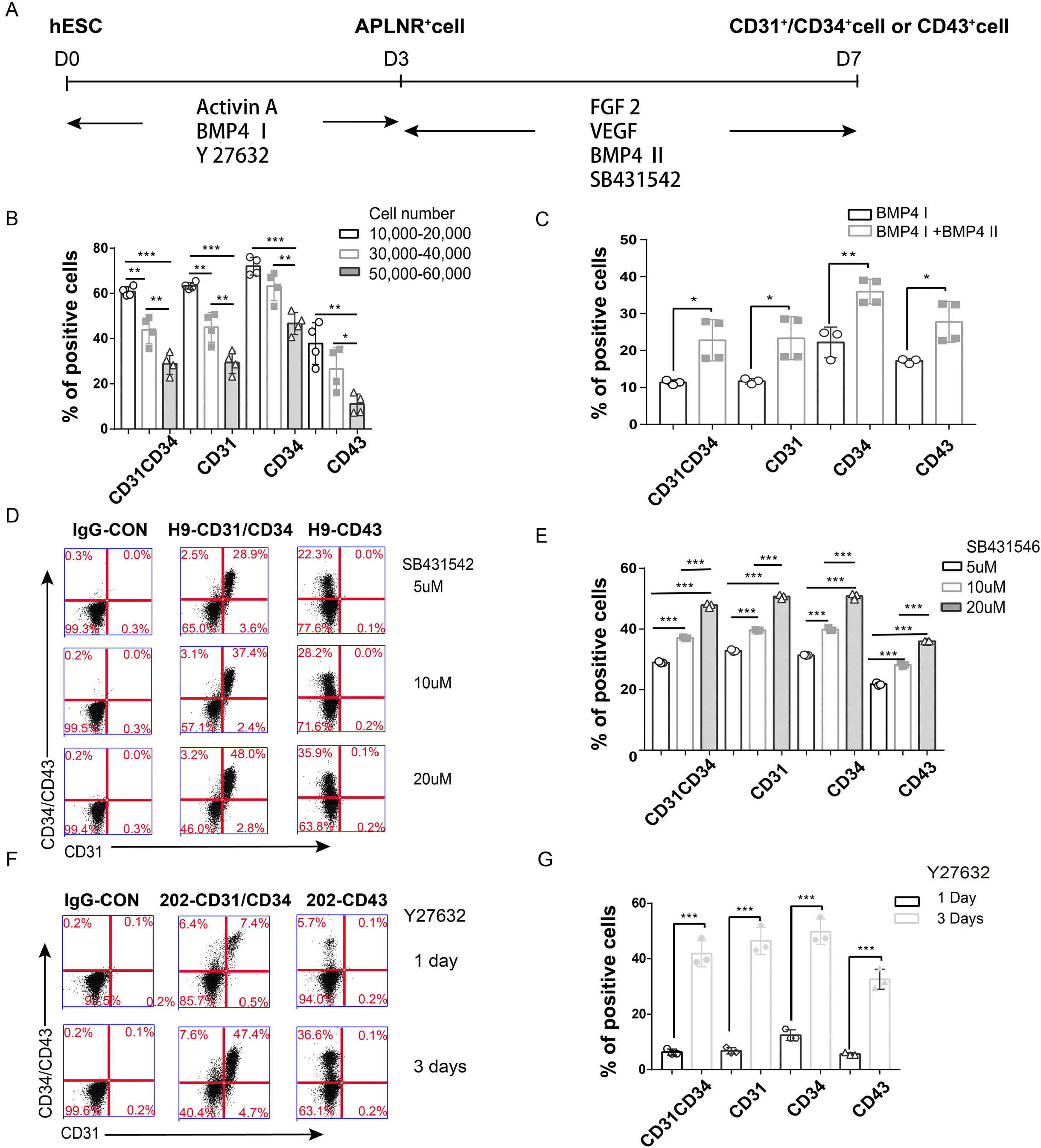
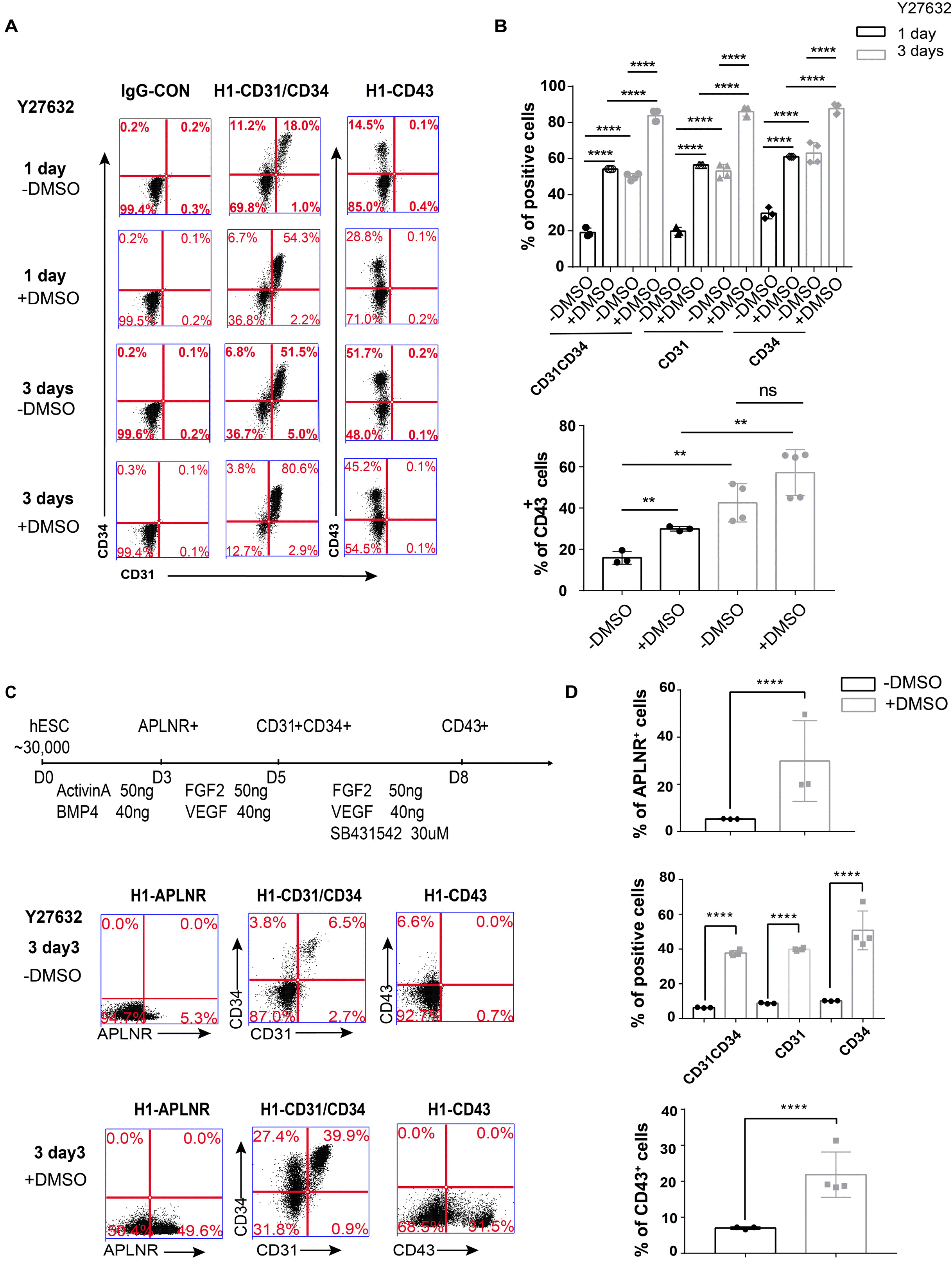
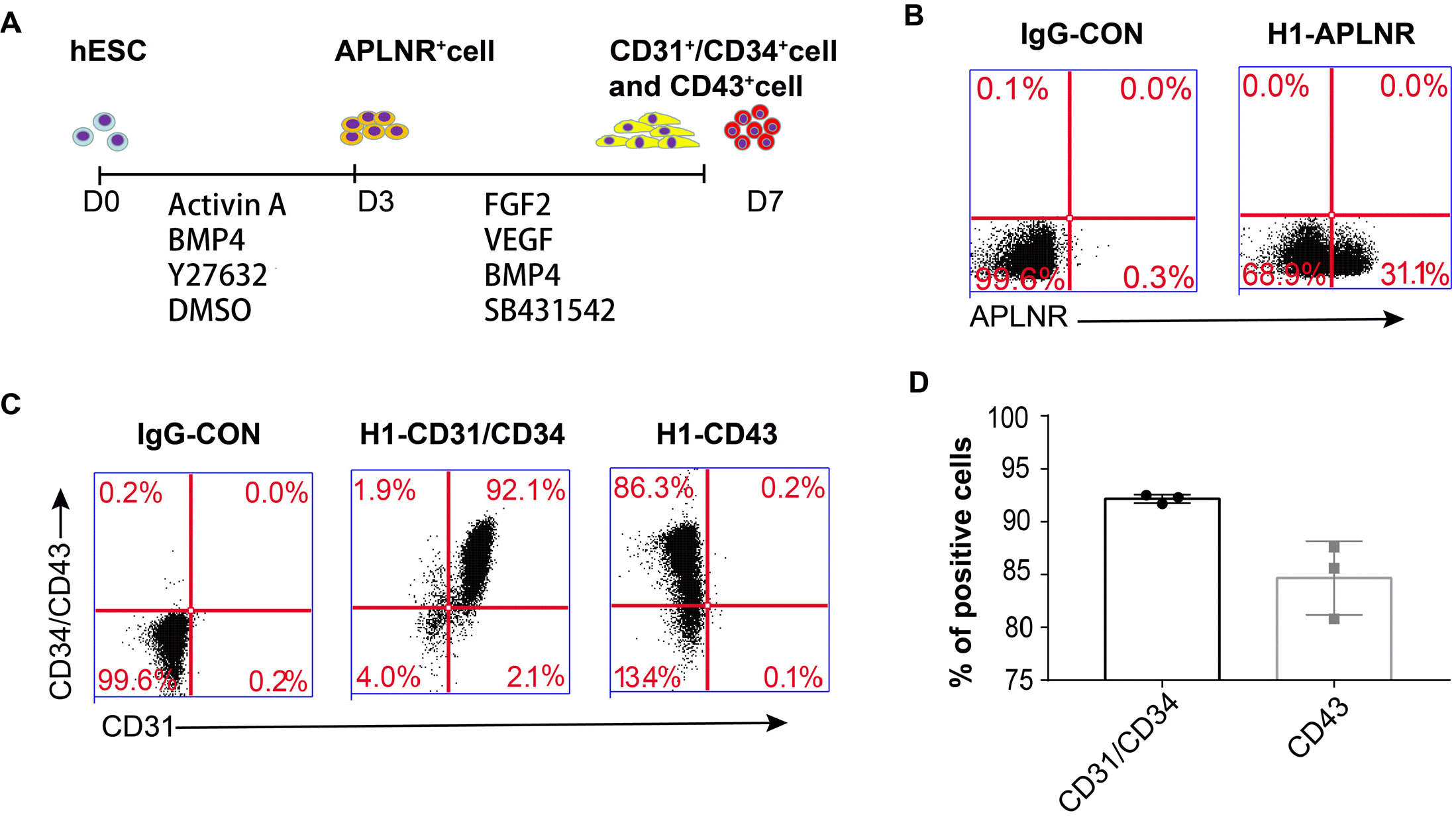
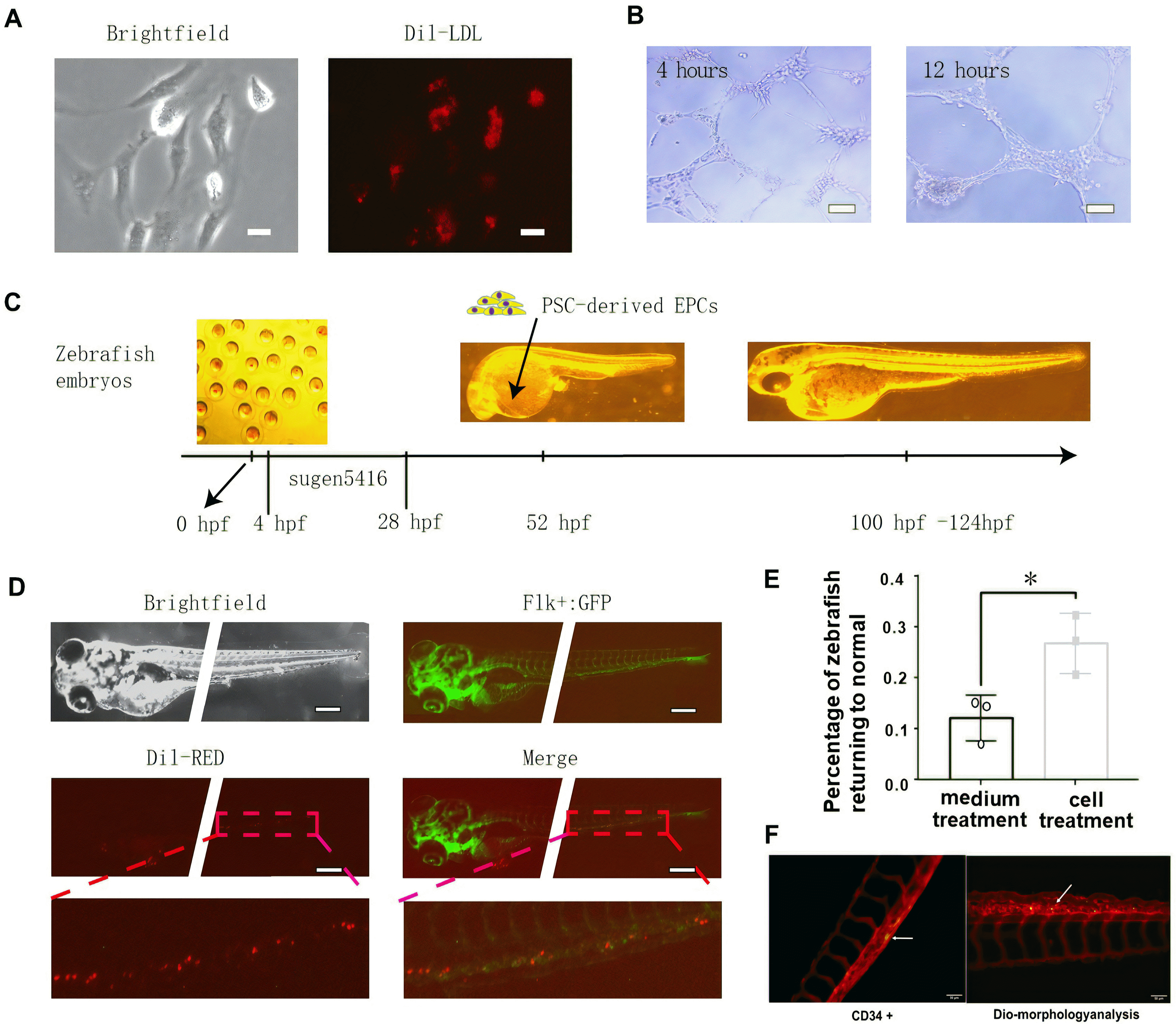
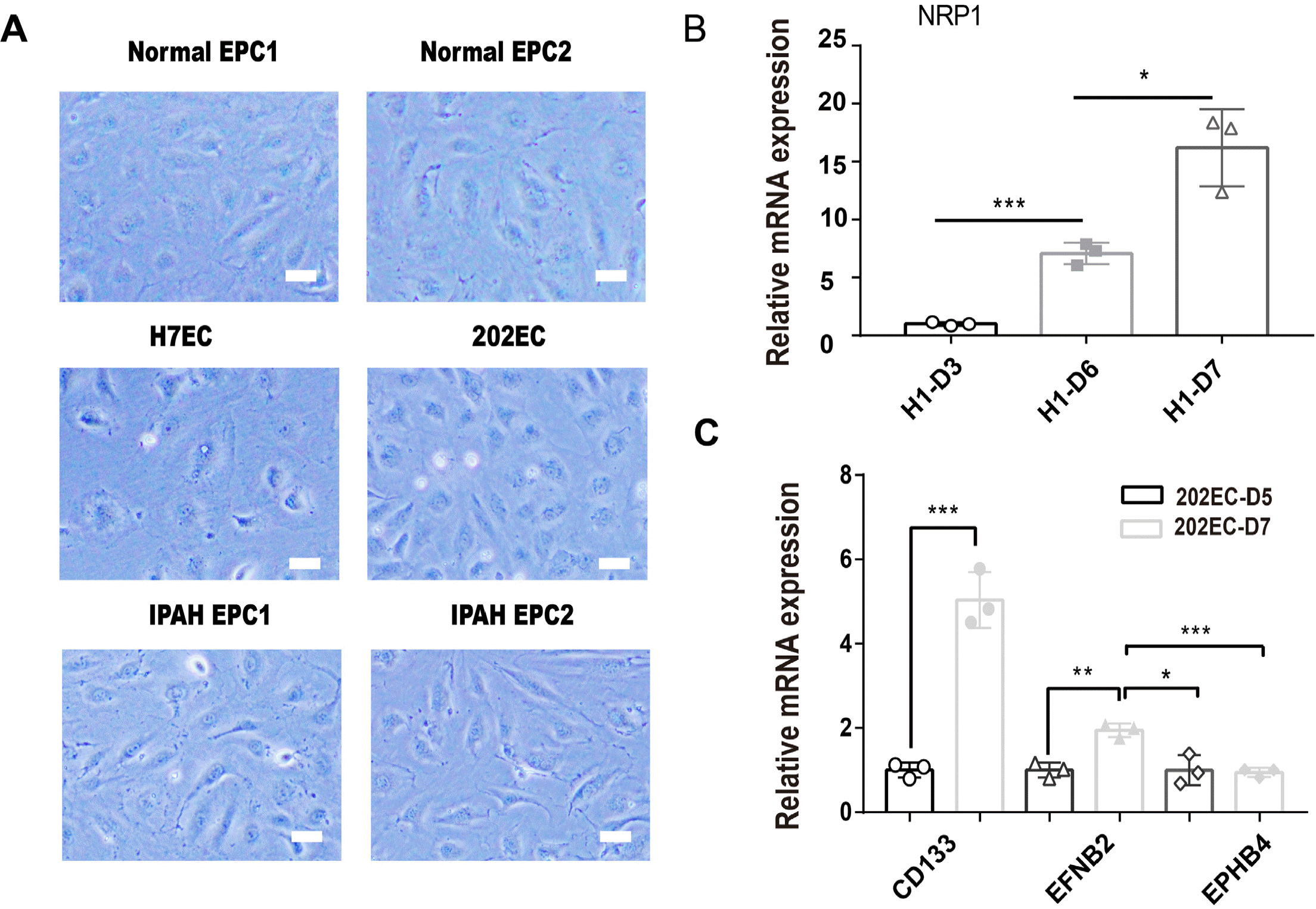
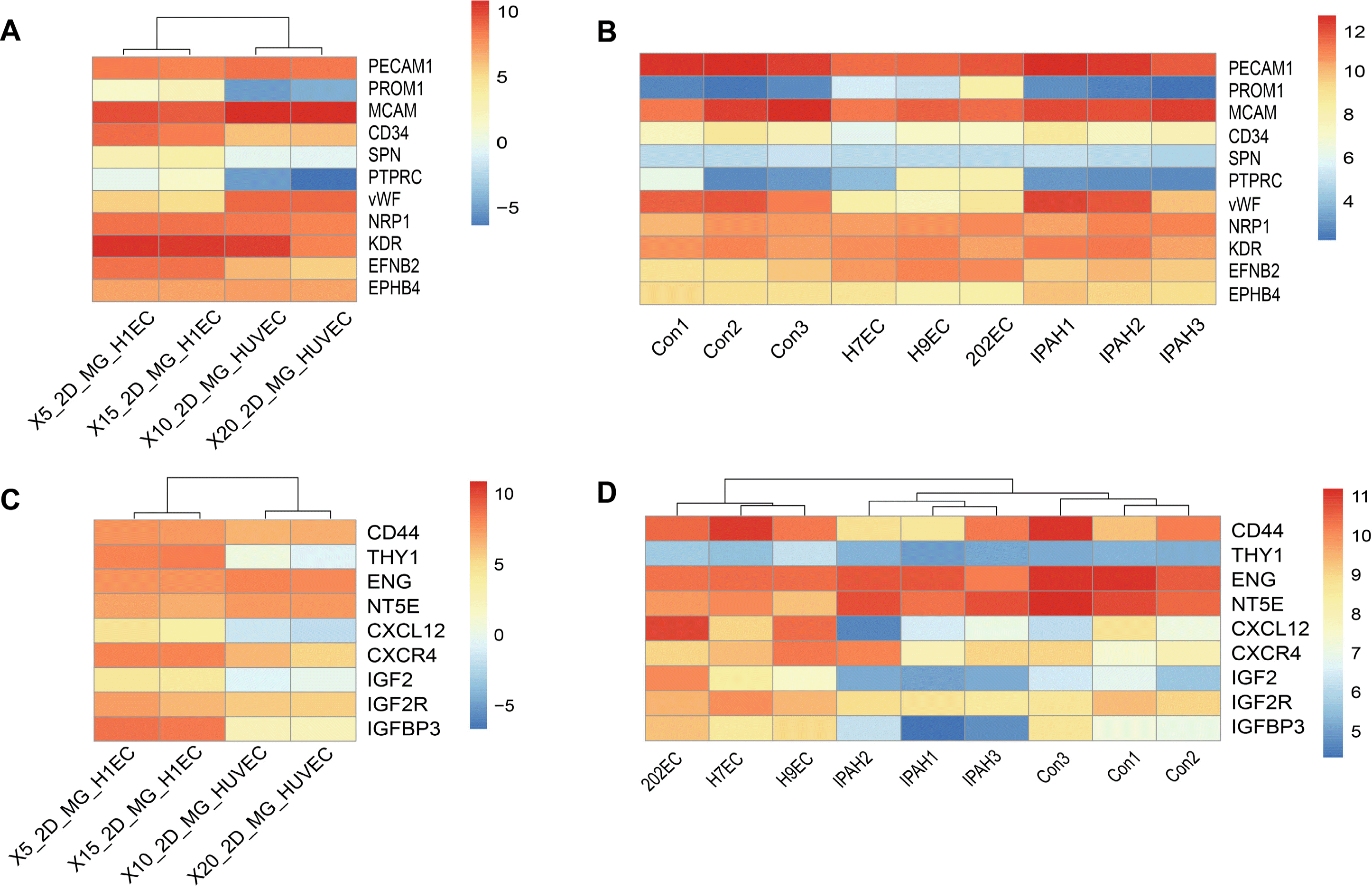
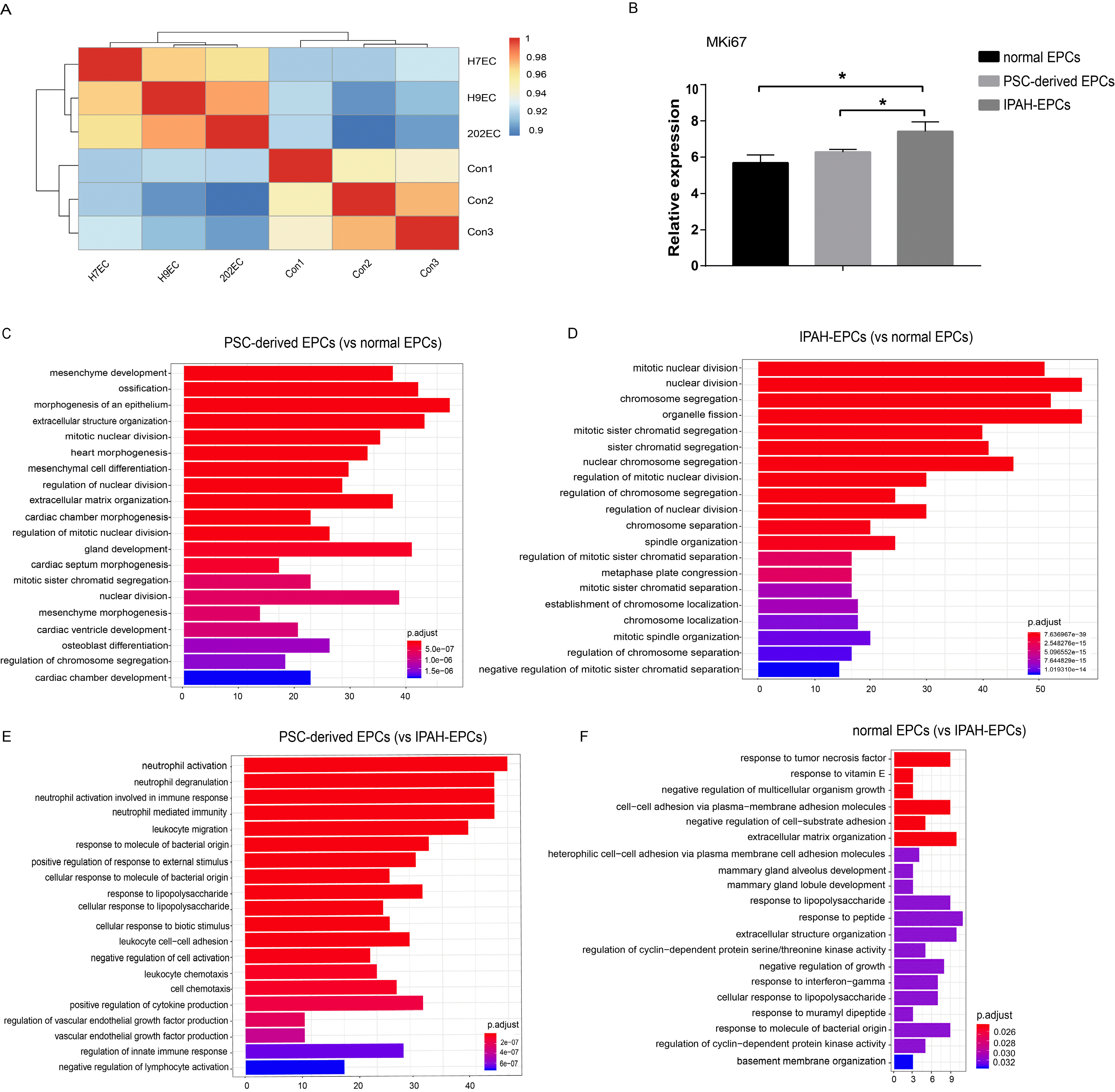




 PDF
PDF Citation
Citation Print
Print


 XML Download
XML Download